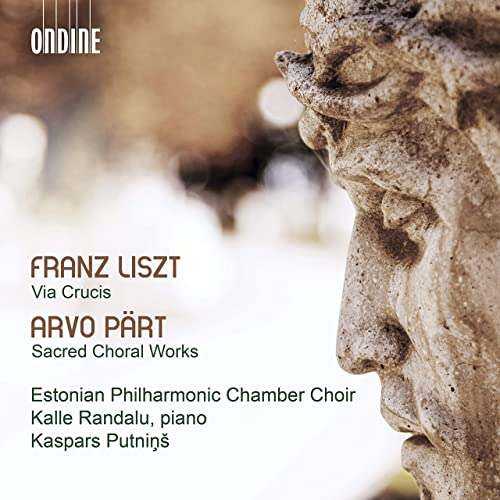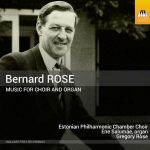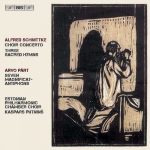
Composer: Franz Liszt, Arvo Pärt
Performer: Estonian Philharmonic Chamber Choir
Conductor: Kaspars Putniņš
Audio CD
Number of Discs: 1
Format: FLAC (tracks)
Label: Ondine
Size: 1.06 GB
Recovery: +3%
Scan: yes
01. Pärt: Solfeggio (1963) – Solfeggio (Version for Chorus)
02. Pärt: Summa
03. Pärt: Zwei Beter (1998)
04. Pärt: The Woman With The Alabaster Box
Liszt: Via Crucis (The 14 Stations of the Cross), S53
05. Vexilla regis
06. I. Jesus wird zum Tode verdammt
07. II. Jesus trägt sein Kreuz
08. III. Jesus fällt zum ersten Mal
09. IV. Jesus begegnet seiner heiligen Mutter
10. V. Simon von Kyrene hilft Jesus das Kreuz tragen
11. VI. Sancta Veronica
12. VII. Jesus fällt zum zweiten Mal
13. VIII. Die Frauen von Jerusalem
14. IX. Jesus fällt zum dritten Mal
15. X. Jesus wird entkleidet
16. XI. Jesus wird ans Kreuz gsechlagen
17. XII. Jesus stirbt am Kreuze
18. XIII. Jesus wird vom Kreuz genommen
19. XIV. Jesus wird ins Grab gelegt
Ülle Tuisk (voice)
Maarja Helstein (voice)
Joosep Trumm (voice)
Rainer Vilu (voice)
Kalle Randalu
Aarne Talvik (voice)
Olari Viikholm (voice)
Annika Lõhmus (voice)
Miina Pärn (voice)
Cätly Talvik (voice)
Marianne Pärna (voice)
Estonian Philharmonic Chamber Choir
Kaspars Putniņš
This program by the award-winning Estonian Philharmonic Chamber Choir under the direction of its artistic director and chief conductor Kaspars Putnins includes Franz Liszt’s (1881-1886) mystery-filled Via Crucis as well as four enigmatic and spiritual choral works by Arvo Pärt (b. 1935). Liszt’s Via Crucis is one of his religious keyworks representing his late modern style. Liszt joined the Franciscan Order in Rome in 1865 and remained as a devout Catholic until the end of his life. Liszt became interested in the Gregorian chant and the works of Palestrina. His stay in Rome inside the Vatican walls inspired him to write several religious works, including the Via Crucis. During Liszt’s lifetime, and even today, his religious works were somewhat neglected: Via Crucis was completed in 1879, but not premiered until 1929. This recorded version for choir and piano features Kalle Randalu, one of Estonia’s internationally most well-known pianists. This recording includes Arvo Pärt’s first choral work, Solfeggio, from the 1960s, which is already looking towards his later style. Pärt has described his Summa from 1977 as his “most strict and enigmatic work” in his series of works in the tintinnabuli style. The two other choral works are based on biblical passages from the Gospels of Luke and Matthew.



